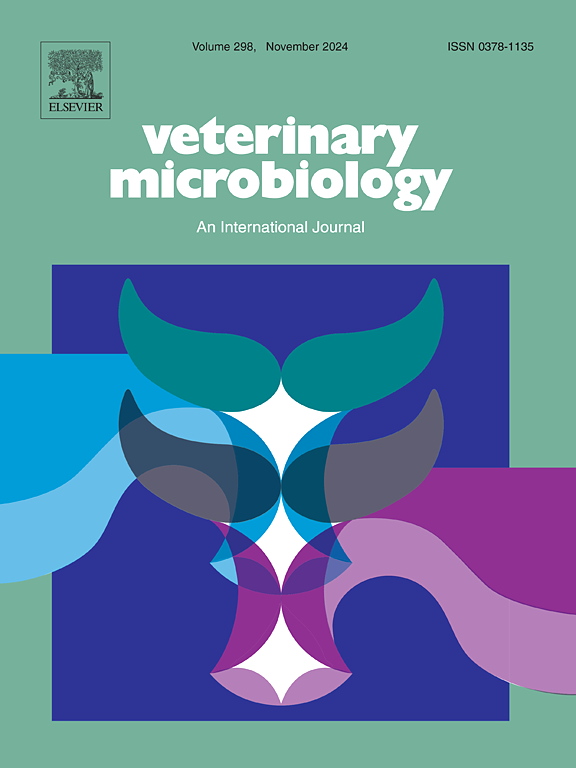Active surveillance in an equine intensive care unit identifies clusters of ESKAPEE pathogens in the veterinary hospital environment
IF 2.4
2区 农林科学
Q3 MICROBIOLOGY
引用次数: 0
Abstract
Healthcare-associated infections (HAIs) associated with ESKAPEE pathogens are an emerging concern in equine hospitals, especially in the intensive care unit (ICU). To gain insight into the occurrence of HAIs and to identify potential reservoirs and transmission routes of ESKAPEE pathogens in an equine ICU, a pilot study of two periods (December 2022-January 2023 and April-June 2023) was performed, where patient and environmental samples were obtained upon ICU admission and discharge. A sampling and laboratory protocol for the detection and identification of different ESKAPEE pathogens and Salmonella spp. was developed. Samples consisted of patient samples and patient-bound environmental samples, including nose and environmental swabs, feces, twitch ropes and catheter tips. Non-patient bound samples were collected from high-contact surfaces for staff members. In total, 271 patient-bound samples (n = 122 in sampling period 1 and n = 149 in sampling period 2) from 30 patients and 28 non-patient bound environmental samples were collected resulting in the isolation of 207 ESKAPEE isolates. A selection of isolates (n = 115) was sequenced to identify clusters and antimicrobial resistance genes. ESKAPEE pathogens were present in 90 % of the horses hospitalized at the ICU or their immediate environment. Different genetic clusters of MRSA, A. baumannii and E. cloacae isolates were identified over time suggesting transmission and persistence within the ICU. During both sampling periods no HAIs were observed, but the abundance of these pathogens might pose a risk for HAIs. This study shows the importance for every (veterinary) hospital to implement surveillance and to further optimize hygiene protocols.
求助全文
约1分钟内获得全文
求助全文
来源期刊

Veterinary microbiology
农林科学-兽医学
CiteScore
5.90
自引率
6.10%
发文量
221
审稿时长
52 days
期刊介绍:
Veterinary Microbiology is concerned with microbial (bacterial, fungal, viral) diseases of domesticated vertebrate animals (livestock, companion animals, fur-bearing animals, game, poultry, fish) that supply food, other useful products or companionship. In addition, Microbial diseases of wild animals living in captivity, or as members of the feral fauna will also be considered if the infections are of interest because of their interrelation with humans (zoonoses) and/or domestic animals. Studies of antimicrobial resistance are also included, provided that the results represent a substantial advance in knowledge. Authors are strongly encouraged to read - prior to submission - the Editorials (''Scope or cope'' and ''Scope or cope II'') published previously in the journal. The Editors reserve the right to suggest submission to another journal for those papers which they feel would be more appropriate for consideration by that journal.
Original research papers of high quality and novelty on aspects of control, host response, molecular biology, pathogenesis, prevention, and treatment of microbial diseases of animals are published. Papers dealing primarily with immunology, epidemiology, molecular biology and antiviral or microbial agents will only be considered if they demonstrate a clear impact on a disease. Papers focusing solely on diagnostic techniques (such as another PCR protocol or ELISA) will not be published - focus should be on a microorganism and not on a particular technique. Papers only reporting microbial sequences, transcriptomics data, or proteomics data will not be considered unless the results represent a substantial advance in knowledge.
Drug trial papers will be considered if they have general application or significance. Papers on the identification of microorganisms will also be considered, but detailed taxonomic studies do not fall within the scope of the journal. Case reports will not be published, unless they have general application or contain novel aspects. Papers of geographically limited interest, which repeat what had been established elsewhere will not be considered. The readership of the journal is global.
 求助内容:
求助内容: 应助结果提醒方式:
应助结果提醒方式:


